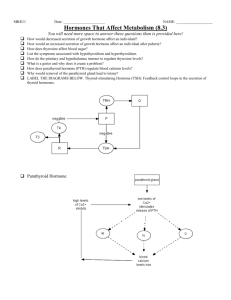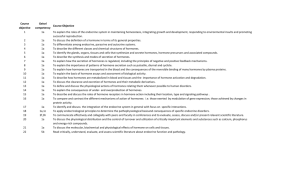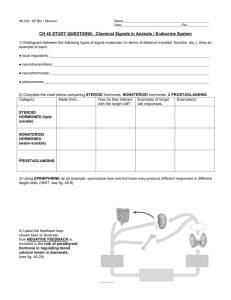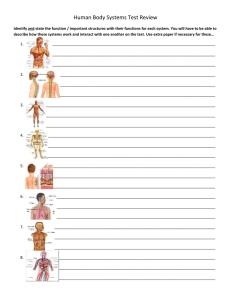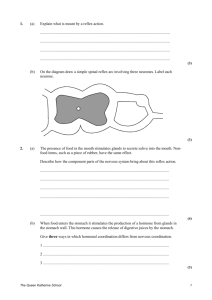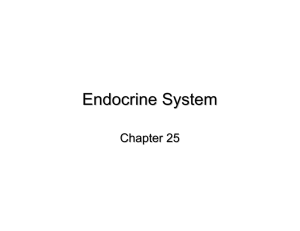Human Organ Systems Independent Study Guide
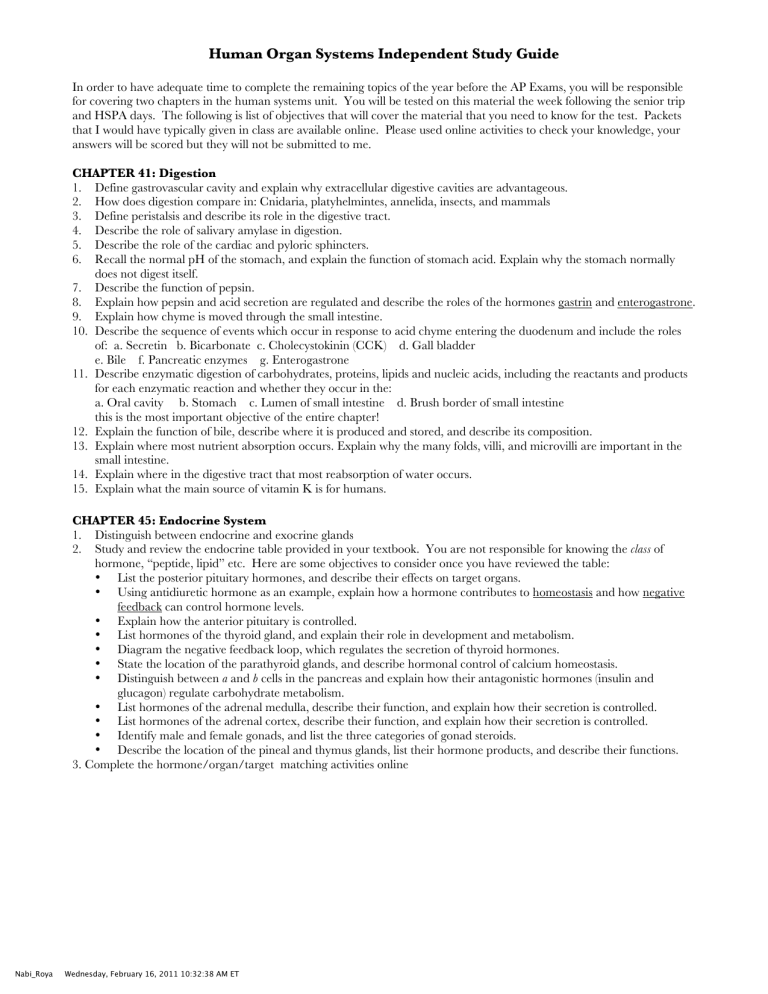
Human Organ Systems Independent Study Guide
In order to have adequate time to complete the remaining topics of the year before the AP Exams, you will be responsible for covering two chapters in the human systems unit. You will be tested on this material the week following the senior trip and HSPA days. The following is list of objectives that will cover the material that you need to know for the test. Packets that I would have typically given in class are available online. Please used online activities to check your knowledge, your answers will be scored but they will not be submitted to me.
CHAPTER 41: Digestion
1.
Define gastrovascular cavity and explain why extracellular digestive cavities are advantageous.
2.
How does digestion compare in: Cnidaria, platyhelmintes, annelida, insects, and mammals
3.
Define peristalsis and describe its role in the digestive tract.
4.
Describe the role of salivary amylase in digestion.
5.
Describe the role of the cardiac and pyloric sphincters.
6.
Recall the normal pH of the stomach, and explain the function of stomach acid. Explain why the stomach normally does not digest itself.
7.
Describe the function of pepsin.
8.
Explain how pepsin and acid secretion are regulated and describe the roles of the hormones gastrin and enterogastrone.
9.
Explain how chyme is moved through the small intestine.
10.
Describe the sequence of events which occur in response to acid chyme entering the duodenum and include the roles of: a. Secretin b. Bicarbonate c. Cholecystokinin (CCK) d. Gall bladder e. Bile f. Pancreatic enzymes g. Enterogastrone
11.
Describe enzymatic digestion of carbohydrates, proteins, lipids and nucleic acids, including the reactants and products for each enzymatic reaction and whether they occur in the: a. Oral cavity b. Stomach c. Lumen of small intestine d. Brush border of small intestine this is the most important objective of the entire chapter!
12.
Explain the function of bile, describe where it is produced and stored, and describe its composition.
13.
Explain where most nutrient absorption occurs. Explain why the many folds, villi, and microvilli are important in the small intestine.
14.
Explain where in the digestive tract that most reabsorption of water occurs.
15.
Explain what the main source of vitamin K is for humans.
CHAPTER 45: Endocrine System
1.
Distinguish between endocrine and exocrine glands
2.
Study and review the endocrine table provided in your textbook. You are not responsible for knowing the class of hormone, “peptide, lipid” etc. Here are some objectives to consider once you have reviewed the table:
• List the posterior pituitary hormones, and describe their effects on target organs.
• Using antidiuretic hormone as an example, explain how a hormone contributes to homeostasis and how negative feedback can control hormone levels.
• Explain how the anterior pituitary is controlled.
• List hormones of the thyroid gland, and explain their role in development and metabolism.
• Diagram the negative feedback loop, which regulates the secretion of thyroid hormones.
• State the location of the parathyroid glands, and describe hormonal control of calcium homeostasis.
• Distinguish between a and b cells in the pancreas and explain how their antagonistic hormones (insulin and glucagon) regulate carbohydrate metabolism.
• List hormones of the adrenal medulla, describe their function, and explain how their secretion is controlled.
• List hormones of the adrenal cortex, describe their function, and explain how their secretion is controlled.
• Identify male and female gonads, and list the three categories of gonad steroids.
• Describe the location of the pineal and thymus glands, list their hormone products, and describe their functions.
3. Complete the hormone/organ/target matching activities online
Nabi_Roya Wednesday, February 16, 2011 10:32:38 AM ET

